All governments lie
All governments lie. But Donald Trump is rarely telling the truth.
And yet this has not fundamentally changed how the media covers his pronouncements. On Friday night, for example, Trump declared that he had "reached a signed agreement with Mexico" that will "greatly reduce, or eliminate, Illegal Immigration coming from Mexico and into the United States."
Trump had pledged to impose a five percent tariff on goods imported from Mexico unless the Mexican government stopped illegal immigration. The tariff would increase over time if Mexico didn't act. Trump said Friday that those plans were now shelved indefinitely.
The nation's biggest media outlets, including the New York Times, CNN, the Washington Post, and immediately reported Trump's claims as fact.
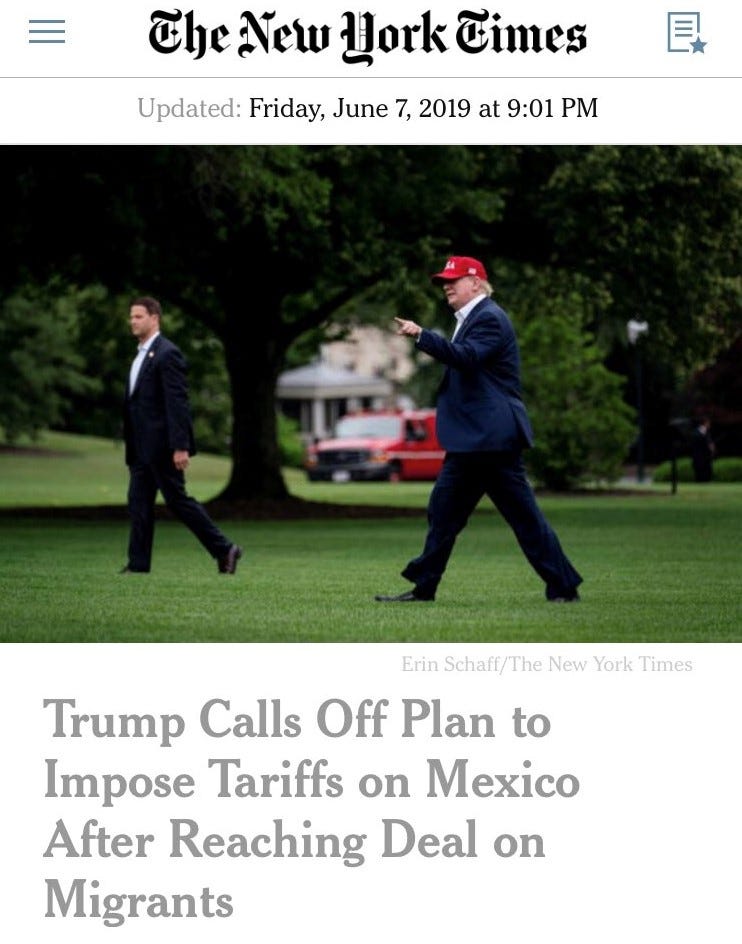
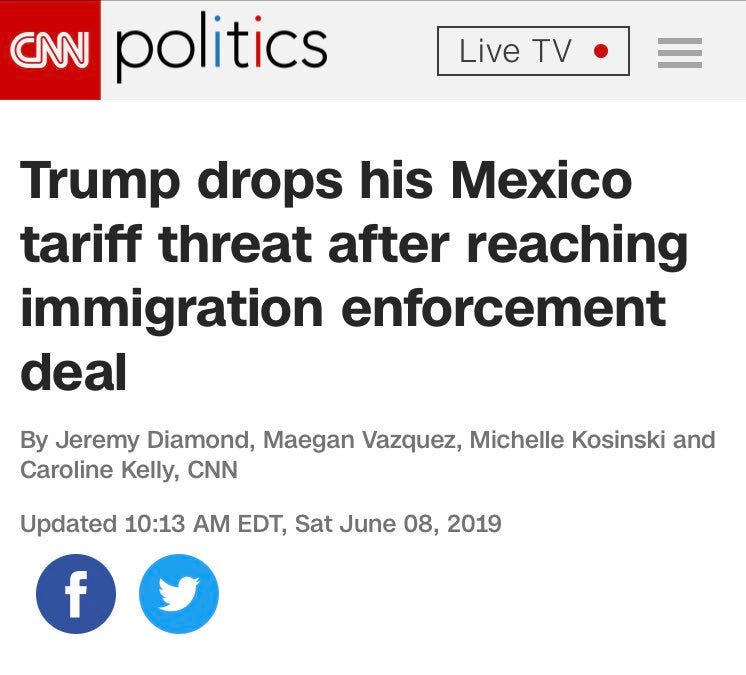
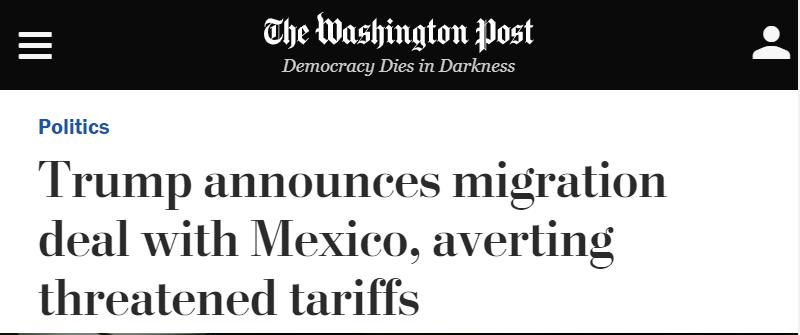
These headlines parrot Trump's narrative. But dig an inch below the surface, and the entire story falls apart. Under the "deal," Mexico agreed to take a series of actions that were already underway.
The phony agreement was little more than a way for Trump to save face.
The troops were already deployed
The first provision of the joint U.S.-Mexico declaration, which is less than 500 words long, states that "Mexico will take unprecedented steps to increase enforcement to curb irregular migration, to include the deployment of its National Guard throughout Mexico, giving priority to its southern border."
Deploying the Mexican security forces to curb "irregular migration" is not, however, unprecedented. The Mexican government decided to take this step in July 2018, as Quartz reported last year:
Newly-elected Mexican president Andrés Manuel López Obrador is planning to create a new security force to police Mexico’s southern and northern borders. The goal is to stop Central and South American migrants from entering Mexico and, if they managed to cross the country, from entering the US.
The agreement does not require Mexico to deploy any specific number of people. The details of the effort are left completely to Mexico, just as they were before the agreement.
The asylum seekers were already returning to Mexico
The second provision of the declaration states that "those crossing the U.S. Southern Border to seek asylum will be rapidly returned to Mexico where they may await the adjudication of their asylum claims." But, as the agreement acknowledges, this program, known as the Migrant Protection Protocols, is already in place. The Department of Homeland Security announced the initiative in January. The program started in San Diego and expanded to El Paso and Calexico. The administration already announced plans to expand it across the entire border.
Sending asylees back to Mexico "could result in tens of thousands of migrants waiting in limbo in potentially unsafe conditions in Mexico." The Migrant Protection Protocols were temporarily blocked by a federal court in April, which ruled that it was likely the Trump administration had exceeded its authority. The law requires the administration to ensure that immigrants "are not returned to unduly dangerous circumstances."
That ruling, however, was reversed by the 9th Circuit Court of Appeals in May. The appeals court allowed the program to continue, pending a final decision on the merits. The appeals court found that the lower court ruling "takes off the table one of the few congressionally authorized measures available to process the approximately 2,000 migrants who are currently arriving at the Nation's southern border on a daily basis."
The program may eventually reach the Supreme Court. But it is not new, and it is not something that Mexico agreed to on Friday.
The fake agricultural deal
Although there is no mention of it in the text of the declaration itself, Trump tweeted that Mexico had agreed to buy products from U.S. farmers.
But Bloomberg reported that wasn't true. Mexico did not agree to anything that wasn't written in the declaration. There are no other documents.
But wait, there is no more
What else is there? Nothing, really. The rest of the declaration is stocked with nice-sounding phrases that mean very little. For example: "[T]he United States and Mexico commit to strengthen bilateral cooperation, including information sharing and coordinated actions to better protect and secure our common border."
So why did Trump agree to drop his threat to impose sanctions in exchange for two things that are already happening? He needed to get himself out of a political bind.
The internal revolt
Throughout his presidency, Trump has been able to count on the unflinching support of the vast majority Senate Republicans. They've defended his judicial nominations, rationalized his crimes, and ignored his tweets. But his threat to impose tariffs on Mexico, effectively imposing a substantial tax on American consumers and undermining economic growth, appeared to prompt a revolt.
On Tuesday, Senate Republicans warned the White House that it had the votes to block the tariffs and were prepared to do so.
Senator Ron Johnson, Republican of Wisconsin, said he warned the lawyers that the Senate could muster an overwhelming majority to beat back the tariffs, even if Mr. Trump were to veto a resolution disapproving them. Republicans may be broadly supportive of Mr. Trump’s push to build a wall and secure the border, he said, but they oppose tying immigration policy to the imposition of tariffs on Mexico.
“The White House should be concerned about what that vote would result in, because Republicans really don’t like taxing American consumers and businesses,” Mr. Johnson said.
"There is not much support in my conference for tariffs," Senate Majority Leader Mitch McConnell (R-KY), said Tuesday.
So if Trump tried to implement the tariffs, he faced a real possibility of a humiliating defeat in Congress. He needed a way out.
The Mexican government, of course, knew that Trump was in a bind. It was willing to sign a deal, but only one that didn't require it to do anything new.
Too little too late
The front page of the New York Times included one of the worst headlines concerning the so-called deal: "Trump Reveals Pact That Thwarts Crisis With Ally and Fellow Republicans."
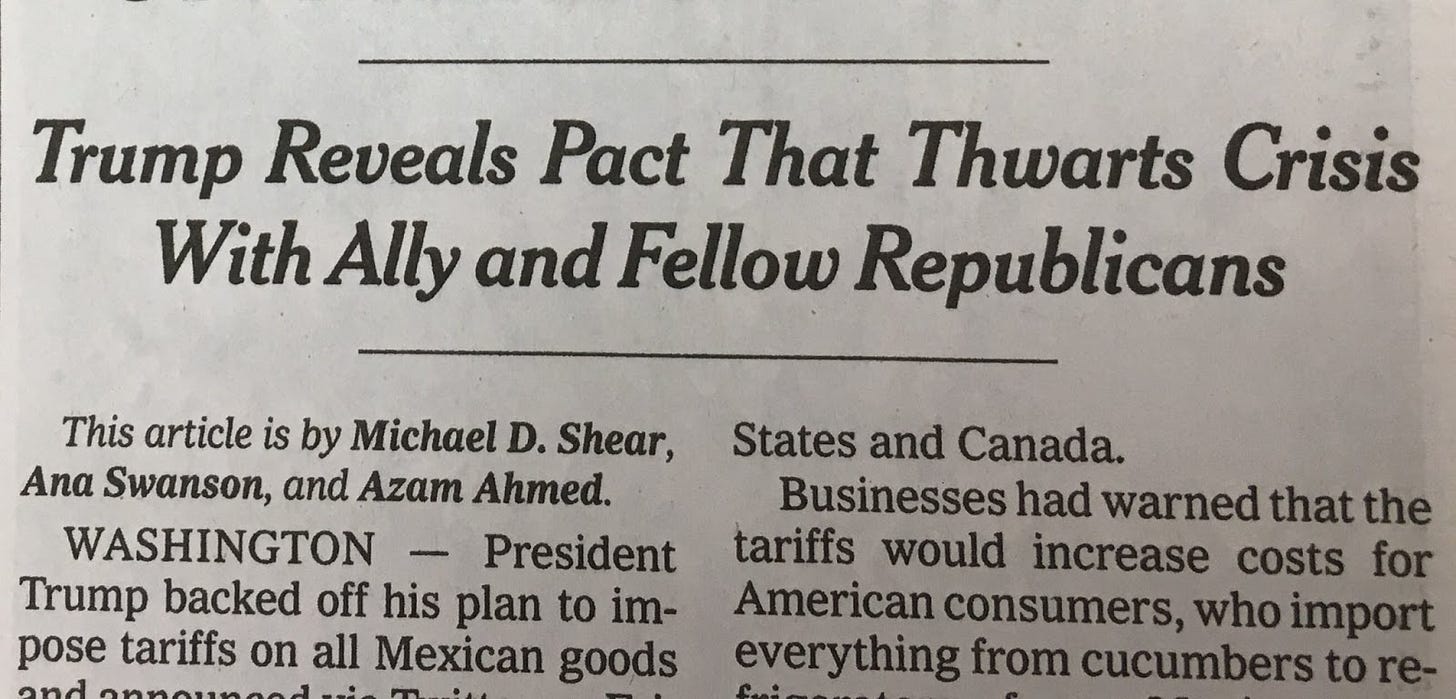
About 24 hours later, the New York Times appeared to realize its mistake and published a new article:
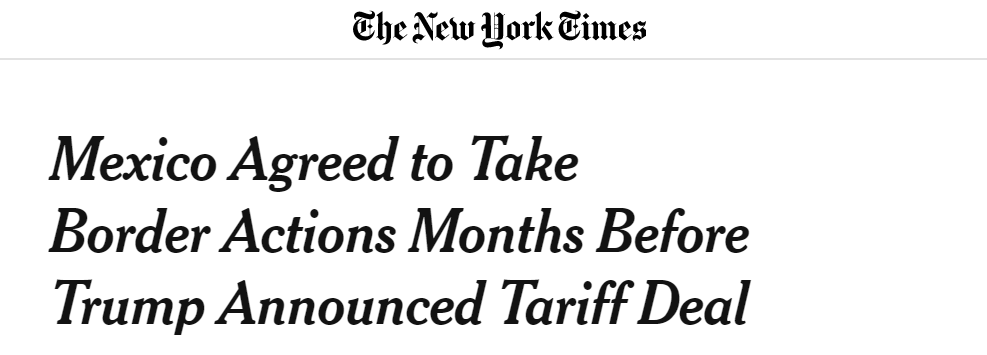
The two articles are contradictory. If these actions were already agreed to, they could not have also averted a crisis. What averted a crisis was Trump dropping his plans to impose tariffs.
It's also strange that the latest New York Times story pretends that figuring out that nothing new was agreed to required anonymous sources. "The deal to avert tariffs that President Trump announced with great fanfare on Friday night consists largely of actions that Mexico had already promised to take in prior discussions with the United States over the past several months, according to officials from both countries who are familiar with the negotiations," the New York Times reports.
But, as you've just learned, you can figure that out through publicly available information. The programs were already announced.
Further, having set in motion a false narrative, the New York Times can't make up for it by writing the opposite story. The damage is already done.
EXCLUSIVE: Bayer stops advertising on Tucker Carlson and Laura Ingraham
Bayer, one of the last major brands advertising with Tucker Carlson and Laura Ingraham, will no longer run ads on either Fox News show, a source familiar with Bayer's decision-making told Popular Information.
Over the last year, dozens of major brands have abandoned Carlson and Ingraham. It's not hard to understand why.
Carlson has repeatedly said that immigrants are making America "dirtier," refused to apologize for a series of deeply sexist and homophobic remarks he made on a radio show, and trafficked in white nationalist conspiracy theories. Ingraham personally attacked Parkland shooting survivor David Hogg, compared detention facilities for migrant children to "summer camp," and recently defended white supremacist Paul Nehlen.
But Bayer seemed reluctant to give up on either Fox News host. In March 2018, Bayer publicly announced it would no longer advertise on Ingraham's show:
But the company quietly resumed advertising on Ingraham's show in August 2018 and has been a regular advertiser ever since.
Bayer had not been advertising on Carlson's show but ran four advertisements on Monday's broadcast. The company's reemergence on Carlson's show went viral on Twitter.
The public scrutiny, according to the source, has prompted a reconsideration of the company’s relationship with both shows. Bayer last ran an ad on Carlson's show on June 4 and last ran an ad on Ingraham's show on May 30.
Bayer did not respond to a request for comment from Popular Information.
Thanks for reading!





Might I suggest a better headline to this story? Art of the Fail
A depressing pair of stories that tell the same truth, known to every single-minded three-year old: when confronted with a wrong-doing, lie about it. Continue to lie about it. Eventually the adults in the room will turn their attention elsewhere. Thanks for your persistence, Judd.